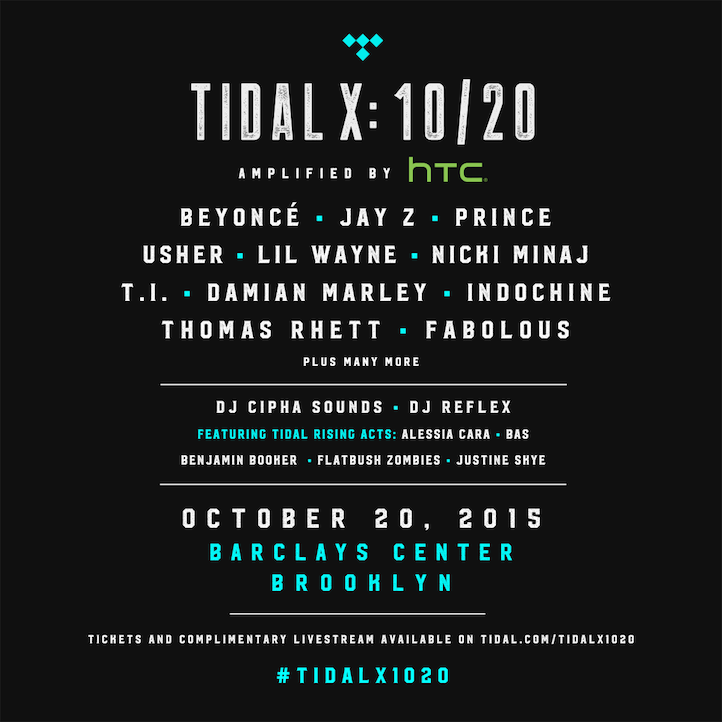2015 Made In America Lineup 23 Jun 2015 9:00 PM (10 years ago)
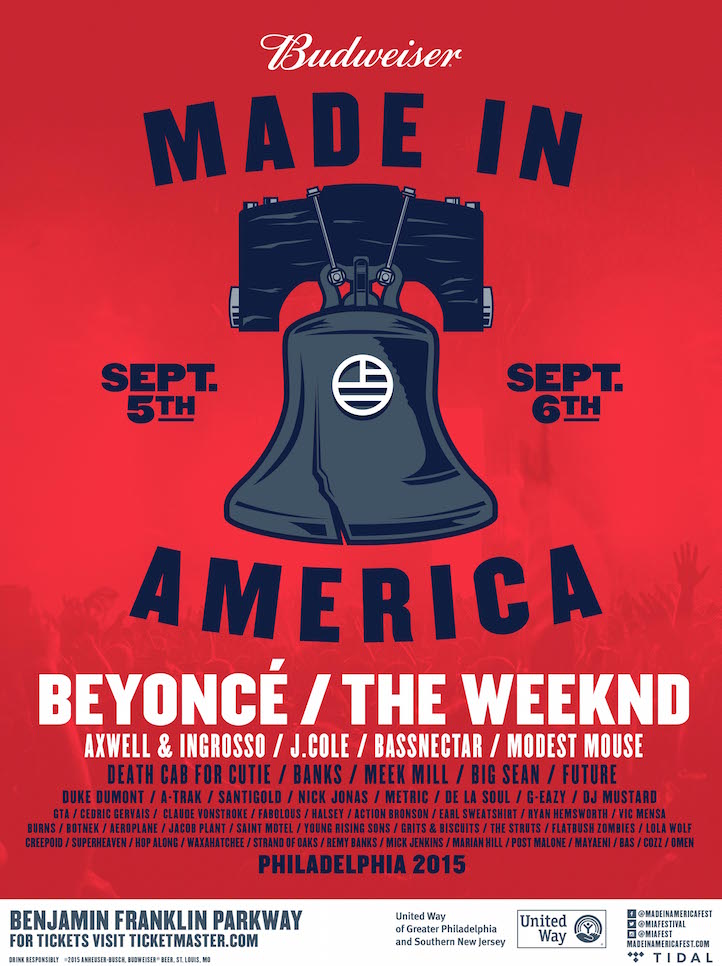
Labor Day Weekend, September 5th & 6th. Benjamin Franklin Parkway, Philadelphia
Pre-sale tickets on sale June 25, 2015 at 10am at Ticketmaster.com and LiveNation.com.
For more information, click here.
Welcome Vic Mensa to the Roc Nation Family 20 Apr 2015 9:00 PM (10 years ago)
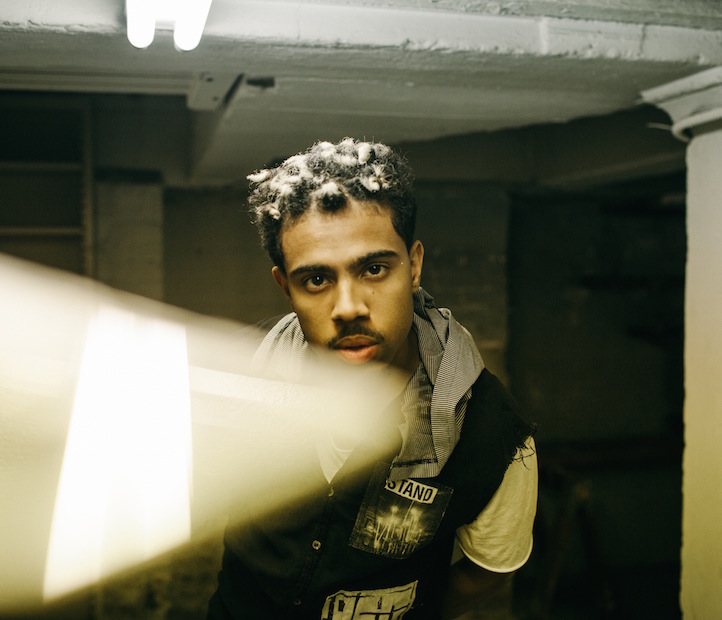
At the age of 21, Vic Mensa has already established himself as an integral part of Chicago culture, first co-founding the SAVEMONEY collective and releasing two mixtapes in two years and now as a solo artist signed with the Roc Nation family. His debut mixtape ‘Straight Up’ in 2010, followed by 2013’s ‘INNANETAPE’, brought Mensa’s solo work to a new and larger audience. In addition, The Chicago native’s critically acclaimed 2nd project helped earn him a top spot on XXL Magazine’s 2014 freshman class.
After closing out 2013 with US dates on the J. Cole and Wale “What Dreams May Come” tour and a European tour with Danny Brown, Mensa released his biggest single to date; 2014’s “Down On My Luck.” In 2015, Vic Mensa will release new music and thus far has collaborated with Kanye West and Sia on “Wolves” – the first track on Kanye West’s upcoming album ‘So Help Me God’. Vic Mensa’s live performances to date include Wireless Festival, The Governors Ball Festival, the Emmy Award-winning comedy show Saturday Night Live and the 2015 Coachella Valley Music and Arts festival.
Now part of the Roc Nation Records family, you can get Vic’s new single, “U Mad” ft. Kanye West, at all digital retailers. Watch the official video of him signing to Roc Nation exclusively on Tidal.
Watch the Video For JAY Z’s “Glory” Exclusively on TIDAL 15 Apr 2015 9:00 PM (10 years ago)
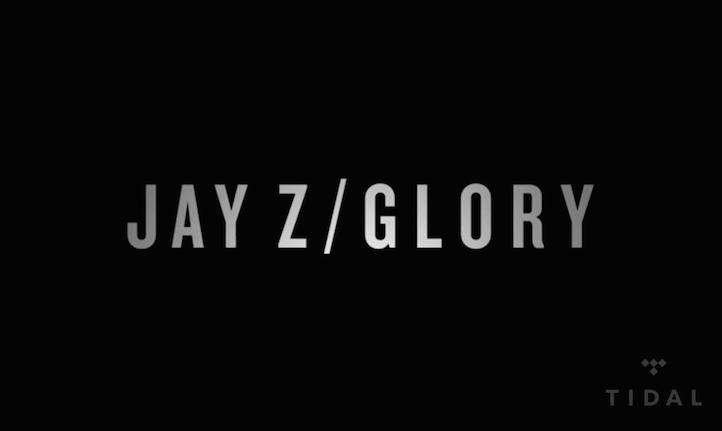
Watch the video For JAY Z’s “Glory” on exclusively on TIDAL.com
Life+Times Premiere: Ratchett Traxxx “Blacc Basquiat – Tha Final Chapter” Mixtape 16 Mar 2015 9:08 PM (10 years ago)
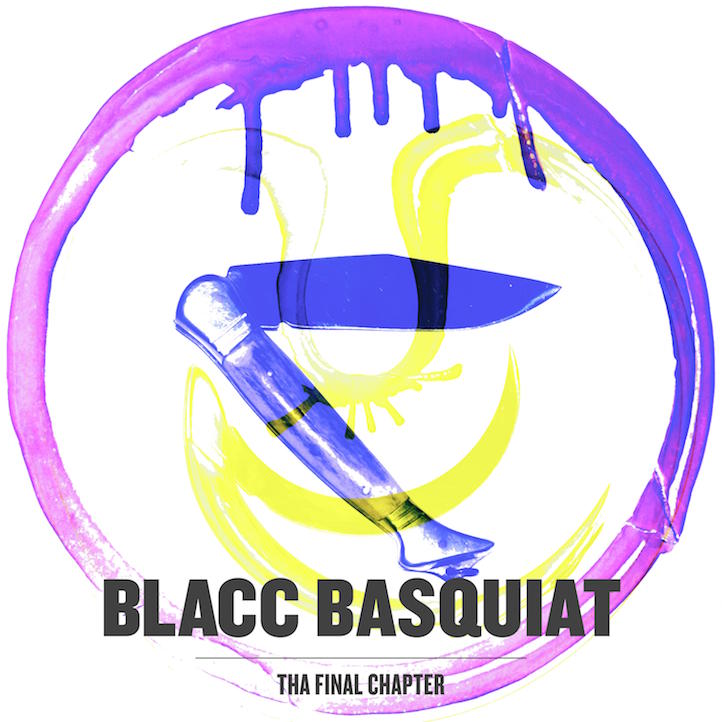
Ratchett Traxxx, a DJ-producer hailing from New Jersey, is perhaps one of the most ambiguous artists on the rise. Ambiguous in the sense that Traxxxstar (one of RT’s additional monikers) reveals no details about his background. That air of elusiveness that accompanies the RT name also comes with an obvious purpose: presenting new music to the world. RT values the origins of dance music from Chicago house to Detroit techno and puts his own authentic, modern touch to it. When asked about what captivates him the most about dance music, RT responds in his standard ALL CAPS fashion ( look at his Twitter account for reference), “Tha only blueprint for dance music should be exactly that ‘dance’ part: do it work on tha floor? If they shit don’t move…it don’t work.” He continues, “Blacc people aren’t a monolith…so I showcase as often as possible how all of tha different music from all tha hoods worldwide can have a home in tha mix, car, or club. Shit from Detroit, Manchester, Toronto, Memphis, London, Houston, or tha West Indies, or whatever…if that shit knoccs and tha ladies love it, I play it.” His production has received nods from the likes of Brodinski and Boys Noize just to name a couple. In fact, RT’s official remix of Spank Rock’s “Burning Man” (world premiere in the mix herein) will be released via Boysnoize Records later this spring.
In this exclusive L+T premiere of Blacc Basquiat – Tha Final Chapter, RT presents a masterpiece of sounds ranging from classic house to techno to hip hop. If there were ever a place where Green Velvet’s “Shake and Pop” lyrics (I like electro/ I like retro/I like ghetto/House and techno) would apply, it would be within the parameters of this mix. “I have done a few volumes before, but this is tha apex,” RT says regarding Blacc Basquiat – Tha Final Chapter. “These mixes are like paintings for me…colorful, detailed…n informed by tradition n history.”
TRACCLIST
01. Three 6 Mafia – Who Run It
02. ROBERT HOOD – APARTMENT ZERO
03. MUSICAL MOB – PULSE X
04. BASIC CHANNEL – PHYLYPS TRACK II-II
05. K.P. & ENVYI – SWING MY WAY
06. PRETTY TONY – JAM THE BOX
07. L’TRIMM – CARS WITH THE BOOM
08. POISON CLAN – SHAKE WHAT YA MAMA GAVE YA
09. HIPNOSIS – END TITLE
10. NEWCLEUS – PUSH THE BUTTON
11. CYBORG UNKNOWN – YEAR 2001
12. RECKLESS RON COOK – RIDE IT
13. DJ STINGRAY – TEMPORARY BOND
14. DREXCIYA – ANDREAN SAND DUNES
15. MODEL 500 – HI NRG
16. UNITS – THE RIGHT MIX
17. DATA – BLOW
18. LIAISONS DANGEREUSES – PEUT ETRE..PAS
19. PARRIS MITCHELL – GHETTY BOOTY
20. HITTRAX – HOUSE OF SNAKES
21. ALEX O. SMITH – ULTRA FINE 2
22. BRAZILIAN GIRLS – LAST CALL (CARL CRAIG REMIX)
23. CJ BOLLAND – SUGAR IS SWEETER (ARMAND’s DRUM & BASS MIX)
24. J DILLA – TRUCKS
25. SPANKROCK – BURNING MAN (RATCHETT TRAXXX REMIX)
26. BIG SEAN – PARADISE
27. KANYE WEST – ALL DAY
28. DRAKE – 10 BANDS
29. FABOLOUS – LITUATION
30. TELA – TWISTED
31. PROJECT PAT – IF U AINT FROM MY HOOD
32. MYSTIKAL – FEEL RIGHT
33. BRODINSKI FEAT. BLOODY JAY – US
34. OSUNLADE – 139TH STREET
35. ARIL BRIKHA – GROOVE LA CHORD
36. ANTHONY SHAKIR – ELECTRON RIDER
37. REEL BY REAL – KARMA (DON WILLIAMS RANDOM OCTIVATION REMIX)
38. CLUB MCM – CLUB MCM
39. UNDERGROUND RESISTANCE – SWEAT ELECTRIC
40. B CALLOWAY – LATE NITE RIDE
41. A.J. MCGHEE – 5TH OF REMY
42. DJ DEEON – YO MOUF
43. CARL TAYLOR – DEBBIE’S GROOVE (ROBERT HOOD REMIX)
44. B CALLOWAY – 98 DEGREES
45. CLAUDE YOUNG – SACRIFICES
Marc Cary Discusses “Rhodes Ahead, Vol. 2,” Go-Go Music And More 16 Mar 2015 9:07 PM (10 years ago)

When Marc Cary dropped Rhodes Ahead, Vol. 1 in 2000, it was ahead of its time. While it flew under the radar for some – though he was recognized as the Billboard/BET Best New Jazz Artist – it set the precedent for a wave of musicians to come, each equally as anxious to play without the categorical constraints of genre.
15 years later, he’s officially revisiting those sounds and concepts with Rhodes Ahead, Vol. 2. This time, the sound is again defined by the futurism of Cary’s standout rhodes, moving further along the path less traveled, innately pulling from the worlds of hip-hop, go-go, African, Afro-Cuban, and more.
Life+Times spoke with Cary about Rhodes Ahead, Vol. 2, pioneering an era and more.
Life+Times: Why did you want to revisit the Rhodes Ahead idea now? The first one came out back in 2000…
Marc Cary: I wanted to tell a true story, but I wanted to tell a story across my development. There are certain things I started with, certain elements of music and – I hate the word genre but for lack of a better word – elements of different genres that I’ve naturally been able to pull from because of my interests. What I do on most albums, there is a song on there that is a preview to what’s coming, and the album itself is a preview to where my mind is at. At the time we did Rhodes Ahead, Vol. 1, it was a simple battle between what they call “jazz police” – these are critics who basically were gatekeepers of a time – and “young lions,” like Roy Hargrove, Mark Whitfield, Marlon Jordan, Gregory Hutchinson. My point is that, at the time I did [Rhodes Ahead, Vol. 1], it was a jump. I had been putting out records that were adventurous but they were in the genre of jazz. My whole stimulation comes from go-go, hip-hop, indigenous music, the other elements I’ve been exposed to in my life, so I jumped ahead and put this record out and it created a change within the critics, like, “Wow, Marc went totally off the beaten path.” But it still had the elements of jazz over a drum and bass and trip-hop kind of foundation still making it funky enough for people to dance. I revisited that record because it became somewhat of an underground piece. Wherever I go, people are like, “Yo man, your record is stuck in my CD player. I don’t take it out, it’s in rotation.” I realized that it actually touched people.
L+T: Have the times changed in terms of how acceptable it is to make an album like this?
MC: I’ll tell you, man, the simple answer is yes, the times have changed, and they changed when I won the award for [Billboard/BET Best New Jazz Artist in 2000]. When I put that out, it wasn’t that I wasn’t expecting to be recognized, but in a way, you’re already set up to be let down when you’re fighting against critics and people that have a microphone. In my heart, I knew what I was doing was relevant to what was happening. I was trying to let people know, “This is what my peers are doing, they just don’t have the balls to go do a record like this right now.” I wasn’t the only one doing it, I’m just the one that did the record. Me and Roy developed what he did with the RH Factor together. I gave him his first computer to start tracking, I gave him Studio Vision back in the day. He wanted to put his RH Factor record out in the early 90s, but the establishment would not let him do it. They had him deemed as a young lion. Those are my peers, but I wasn’t considered a young lion.
L+T: Describe the body of work that is Rhodes Ahead, Vol 2. then.
MC: Ok, I’ll put it to you like this: the whole record is a sonic projection of experiences and visual experiences that I’ve had. For instance, “7th Avenue North,” that’s directly derived from the light sequence if you walk up 7th Ave. in New York between 110th St. and 125th St., and beyond. I check out people’s rhythms, I can look at windshield wipers and get a vibe from that. Everything has rhythm. “Astral Flight 17” is really based on a recurring dream where I’m flying [through New York] and my feet are first. I’m in an angled position with my head up but my feet are going first. So, the overall idea was to give a sonic projection of things I see, feel and experience.
L+T: You were raised predominantly in Washington, D.C. and came up playing a lot of go-go. What have you pulled from go-go music?
MC: Go-go was what got me into music, besides the fact that I come from a musical family. The idea of enterprising yourself in D.C. as a young man came through several opportunities. You could be a paper boy, a sports cat, but you had to be something. You’ve got four quadrants in D.C.: northeast, southeast, northwest and southwest. The only way you could move around all those places is if you were a dope basketball player or you were in a go-go band or some kind of musical situation. You had a passport at that time. That was my passport to the world. What go-go could do, you could organize your group and name yourself and become a part of [go-go]. It was really very community-oriented. Each quadrant had a sound. You could play all over, but you brought your sound with you. There’s over 250 bands in D.C., and each band comes with their own version of the groove that comes from that area. What I like about go-go – and the difference between go-go and most other music – is that it’s an indigenous rhythm. D.C. is a slave port, you know. Historically, as I started to realize what was happening, it’s like New Orleans or Cuba is because it’s a slave port. The rhythm came from Duke Ellington, so it’s not new. It was codified by Chuck Brown and people like Ayre Raid, Rare Essence, etc. I grew up listening to all these bands and opening up for them. I had a band called High Integrity. I went from that to jazz because go-go and jazz swing the same freakin’ way. I love the rhythm and what I realized, if you go to Cuba, there’s that rhythm, that clave makes that thing happen. D.C. got a clave. It’s a real rhythm, like New Orleans second line. I take go-go real serious and I realize go-go has been a catalyst in a lot of ways for a lot of R&B and hip-hop-oriented hits since the beginning of hip-hop.
L+T: Based on what you’re saying, you can really get an actual history of the world and of people by studying music.
MC: Thank you, man, I appreciate you saying that! What’s happening right now, there is so much access to music you just pull it. “Oh, I like the beat.” But you’ve got to take yourself to the experience when it was being made. “Why is that so dope? What did it impact at that time? Why wasn’t that a hit? Because there’s a message in it.” I look at music, look at the timelines, who was existing, the politics, the struggles, the wars, technology used, all of that stuff is related.
L+T: All of these genres and styles of music you’re talking about – jazz, hip-hop, go-go, African, Afro-Cuban, etc. – are under the same umbrella of Black music. They’re unique, but what is it that runs through each of those? What’s the thread that makes them feel a certain way?
MC: You said it in the question. “What makes it feel?”, and that’s the question that excites the world. If you knew what made it feel that way, then you could just bottle it. The feel is the key. I’m attracted to what makes me feel, it doesn’t even have to be a certain way. If it changes the way I’m feeling, if it effects me, that’s what attracts me because I want to know why. There’s really no answer. There’s a sequence of things that are constant – it’s the rhythm. It’s not how the rhythm is related to something else, it’s just the fact that that rhythm affects people. Most of the stuff I’m attracted has a dance attached to it, there’s movement attached to it. Go-go was the thing that permeated that for me because I saw 500 people get together at one time and rock to polyrhythms.
Marc Cary’s Rhodes Ahead, Vol. 2 is out March 17.
Life+Times Video Premiere: Lili K “I Don’t Want You No More” 16 Mar 2015 9:06 PM (10 years ago)
Chicago’s buzzing hip-hop scene has received plenty of attention via artists like King Louie, Chance The Rapper, Vic Mensa and Lil Bibby over the last few years, but it shouldn’t be forgotten that blues, jazz, and soul have been at the city’s core for decades. The young and soulful Lili K is one working to preserve that legacy.
Guest spots with Chance, Mensa, The O’My’s, BJ The Chicago Kid and others – as well as three EPs of her own – have garnered her a strong reputation as one of the top crooners and collaborators. Here, Life+Times premieres her latest set of visuals, “I Don’t Want You No More” (directed by Addision Wright and J. Frank), showcasing Lili K and her band jamming an old-school groove through a retro black and white lens.
“I Don’t Want You No More” will be included on her her upcoming full-length project, RUBY, available April 21st on Freshly Baked Records.
Respect The Shooter: Julien Bowry Speaks On Photographing A$AP Rocky, The Weeknd, Schoolboy Q, and More 16 Mar 2015 9:00 PM (10 years ago)
With the rise of artists like Drake, Justin Bieber, and The Weeknd and producers like Boi-1da and T-Minus, Canada has shown that New York, California and Atlanta aren’t the music industry’s only breeding grounds for talent. Our neighbor to the north has also established itself as a hub for talent and that doesn’t just extend to artists and producers. Toronto-based photographer, Julien Bowry has been displaying his expertise behind the lens for sometime now. Here, he gives Life + Times the stories behind his photographs of The Weeknd, Joey Bada$$, A$AP Rocky and Off-White’s Virgil Abloh.
Joey Bada$$
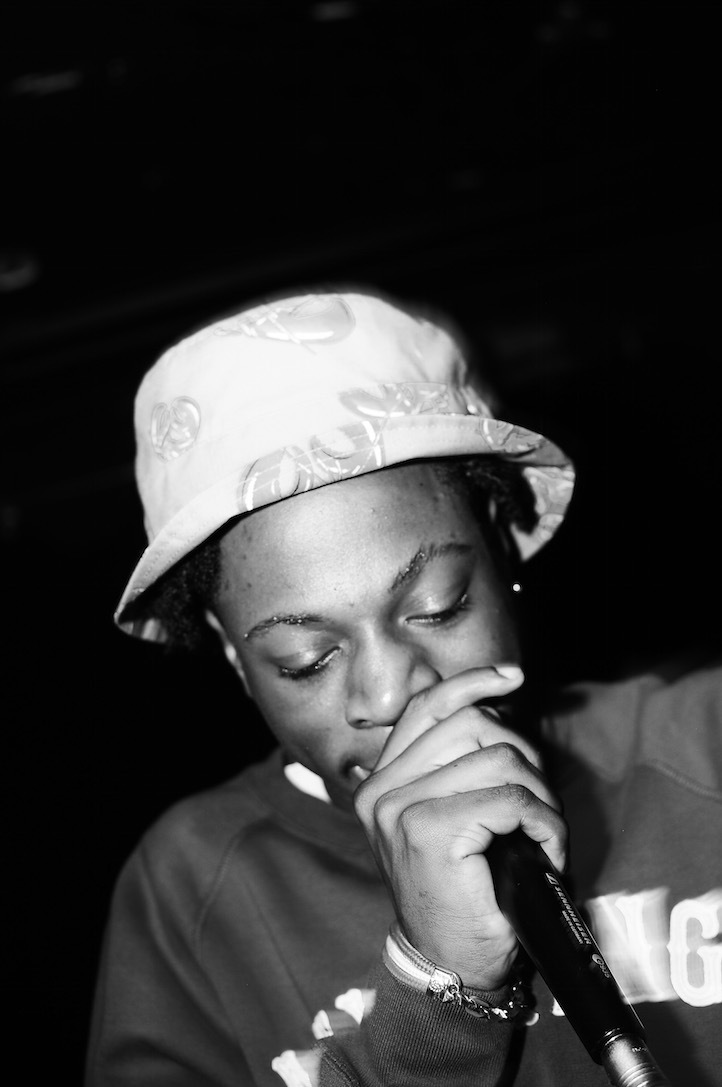
“This was the first hip hop live performance I had ever shot. Joey is one of my favorite lyricists. At one point, Joey punched my lens. He was performing the next day at a much larger outdoor venue when I showed him the photo backstage. The next day he reposted my image on his Instagram account. This was an important moment of affirmation for me.”
